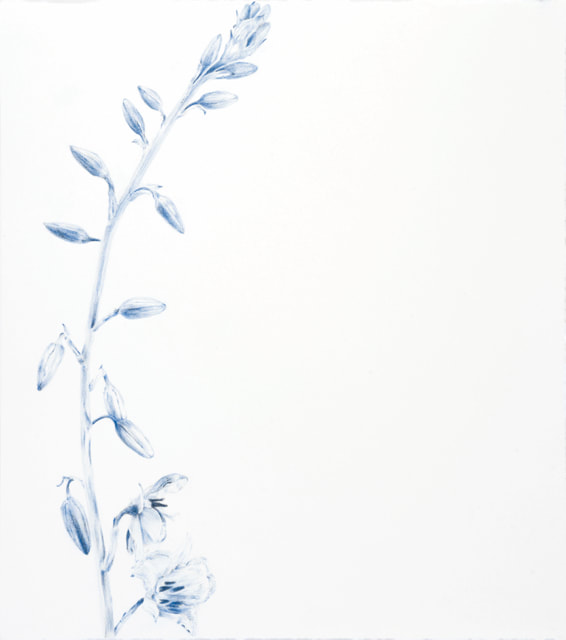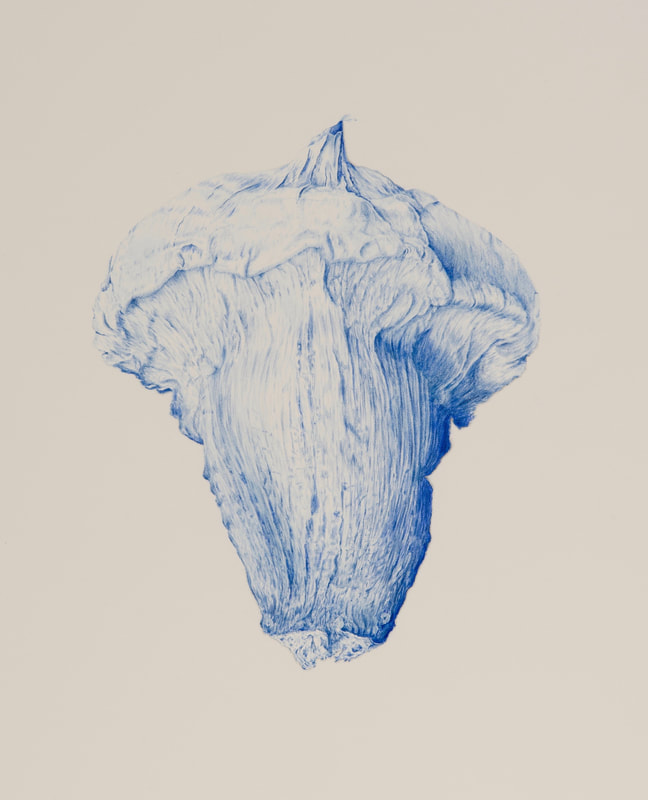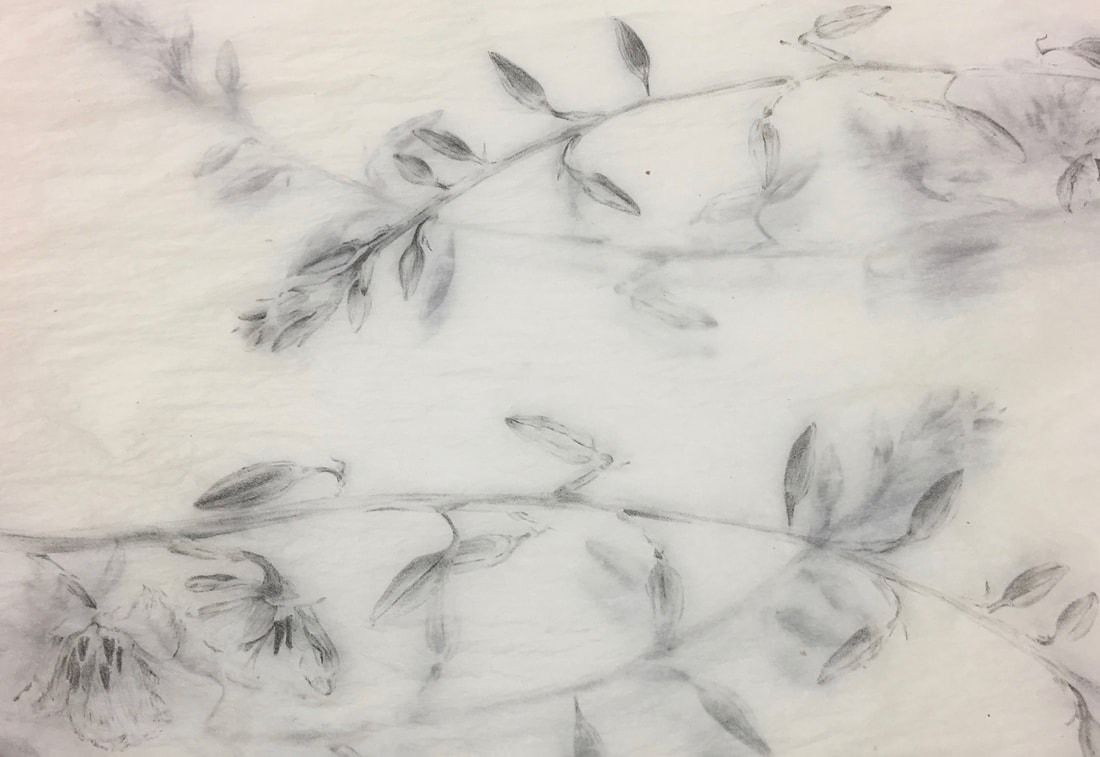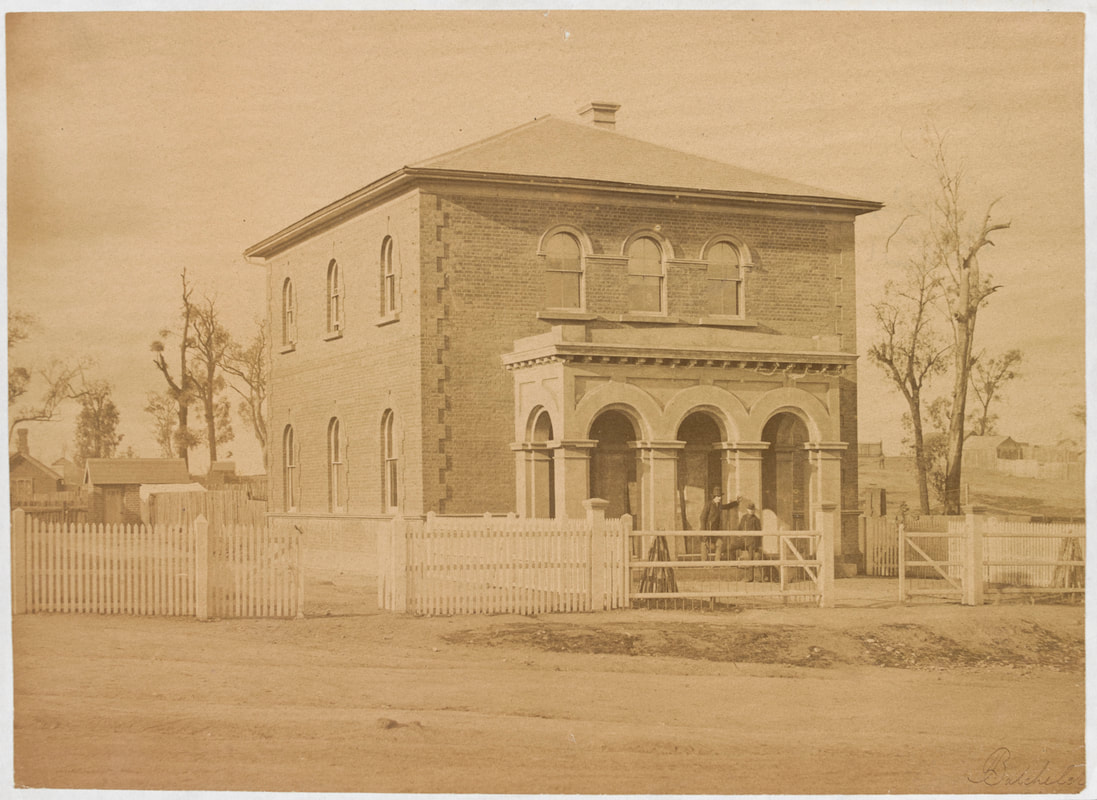|
The gallery area at Dudley House consists of two rooms, one main room and one smaller one. It is my intention to have all the work in the second smaller room be one colour - a blue that is closest to Ultramarine Blue. I decided to do this as an indication of the mono-cultural view of the new immigrants of the colonial era and there are several reasons for my choice of hue.
Firstly this colour is one of the many variations of blue used in willow and other china patterns of the mid Victorian era which I'm considering with this work. The blue is domestically ubiquitous. Secondly, this blue is based on the stone lapiz lazuli which was once considered as valuable as gold - which reminds us that values change over time and across cultures. And thirdly, this blue is often used as a colour to suggest purity, such as with images of the Virgin Mary in Renaissance painting. During the Victorian era women were expected to be morally pure. (See early post re the poem 'The Angel in the House'.) The blue has become something I am increasingly enjoying working with. Before this project I would have assumed I would get bored with one colour but instead I am finding it continues to feed my interests. And so long as it motivates me I will continue to explore. 'Mrs Larritt in Upside-down Country' will run from Friday 16th to Sunday 25th November with and official launch with guest speaker Jo Porter (Co-Producer, Regional Centre for Culture 2018) on Saturday 17th November. Image - stone lithograph with coloured pencil
0 Comments
The world which I aim to celebrate and explore in 'Mrs Larritt in Upsidedown Country' is one where the caring role that was expected of a woman such as Maggie is central. White colonial history remembers significant events, the white men that drove them and until relatively recently assumes women weren't around much. (Thankfully this has been addressed at least in part by recent publications such as Claire Wright's 'Lost Rebels of Eureka') During the Victorian era and Maggie's married life (1858 to her husband's death in 1869) European women were expected to be morally pure and create a home life that was untainted by the quite separate men's world of work outside the home.* This moral purity is exemplified by the poem 'Angel in the House' written by Coventry Patmore and much later discussed by Virginia Woolf in her essay 'Killing the Angel in the House'. (See Patmore's poem here https://www.bl.uk/collection-items/coventry-patmores-poem-the-angel-in-the-house And Woolf's writing here http://www.wheelersburg.net/Downloads/Woolf.pdf ) The making and managing of the domestic sphere, the daily work of caring for family and the material culture of the home are things that have been, and often remain, underrated. Care as a foundational element of domestic activity and the traditionally female caring professions often remains undervalued. For the exhibition 'Mrs Larritt in Upside-down Country' I am particularly interested in Maggie as a young Scottish migrant woman whose role was to care for her husband who was mapping the town. Theirs was a singularly European cultural view yet he was organising the streetscape which became the Australian City of Bendigo. This streetscape grew around colonial gold mining - the mining that turned the Dja Dja Wurrung Country upside-down. Maggie Larritt’s caring role has been mostly forgotten, and thankfully the Dja Dja Wurrung remain proud. It has been my great honour to learn more of the Dja Dja Wurrung through the research for this exhibition, and to draw some of the indigenous plants significant to the traditional owners. I hope I am able to continue to learn more in the future. As a white fella I am humbled by the depths of the ancient and living culture of the Dja Dja Wurrung. It is also an honour to spend time remembering a woman whose everyday reality has been considered unremarkable - yet many small domestic things can add up to an awful lot. The exhibition ‘Mrs Larritt in Upside-Down Country’ will open at Dudley House on Saturday 17th November at 5 – 7pm. www.catherinepilgrim.com www.instagram.com/catherinepilgrim/ www.facebook.com/catherinepilgrim.artist/ NB It is assumed Maggie viewed the Indigenous flowers as decorative unaware of or disinterested in their edible roots. * In the exhibition I am considering Maggie's early married life, yet it is interesting that these Victorian ideals ultimately failed Maggie as her husband died and Maggie later found employment as a Post-Mistress.) |
Catherine PilgrimVisual artist, drawing advocate, and mother of two red headed teenage boys. Archives
August 2021
Categories |
Proudly powered by Weebly




 RSS Feed
RSS Feed